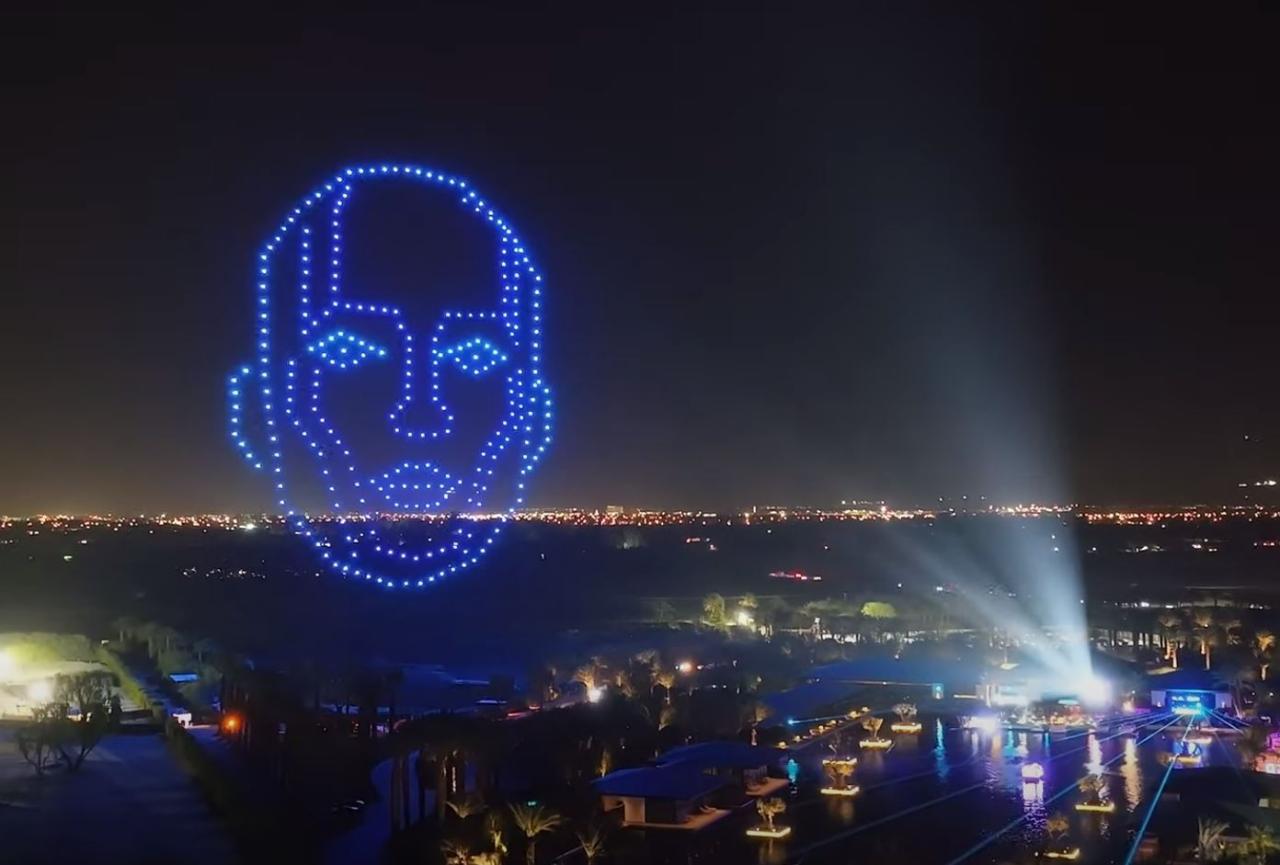Drone shows are taking the entertainment world by storm! Imagine hundreds, even thousands, of drones painting breathtaking pictures in the night sky, synchronized to music and storytelling. This guide dives into the technology, planning, safety, business, creative aspects, and future of these spectacular displays. We’ll cover everything from the basic hardware and software to the complex logistics of pulling off a massive, awe-inspiring show.
We’ll explore the different types of drones used, the software that makes the magic happen, and the crucial safety regulations that ensure these shows are both thrilling and safe. Learn how to plan your own drone show, from securing permits to designing captivating choreography, and discover the various business models and revenue streams involved. We’ll even peek into the future of drone shows and the exciting technological advancements on the horizon.
Drone Show Technology
Drone shows are a captivating blend of technology and artistry. Understanding the underlying technology is crucial for appreciating their complexity and potential. This section delves into the key technological components that make these spectacular displays possible.
Types of Drones Used in Drone Shows
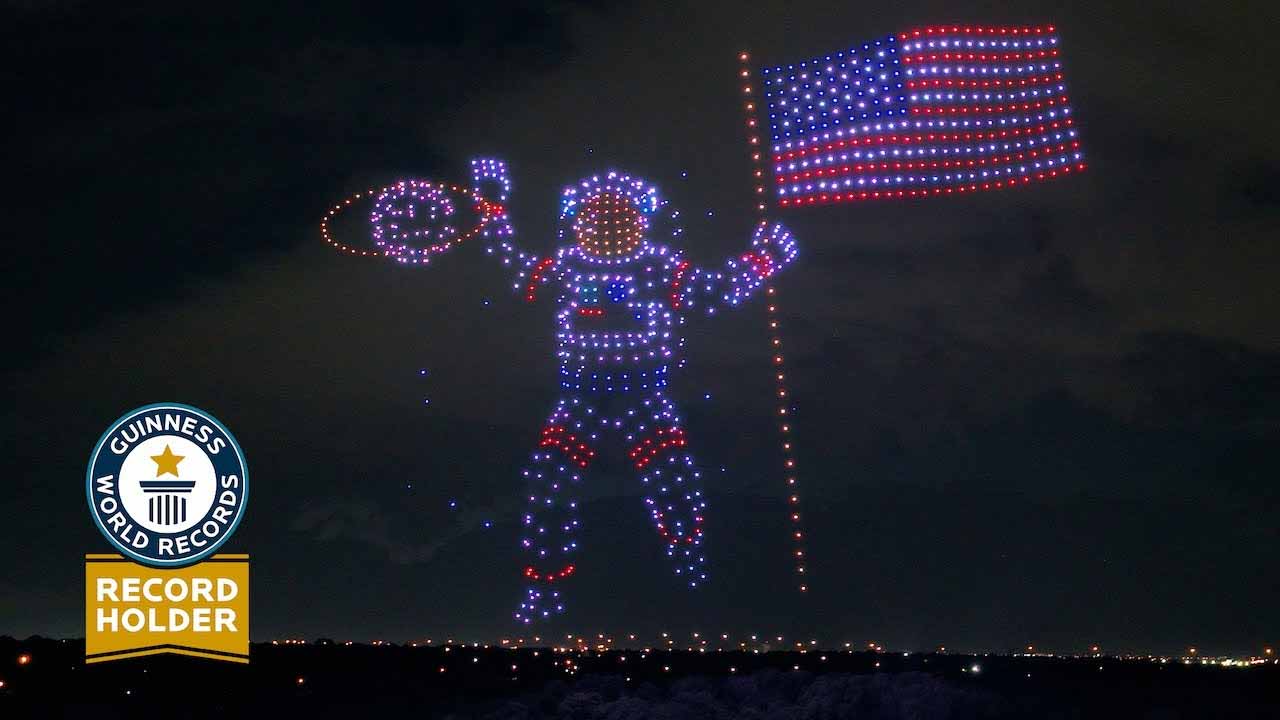
Drone shows typically utilize small, lightweight quadcopter drones. These are chosen for their maneuverability, ease of control, and relatively low cost. While other drone types exist, quadcopters offer the best balance of features for synchronized flight formations and intricate choreography.
Software and Hardware Components
A successful drone show relies on a sophisticated interplay of hardware and software. The hardware includes the drones themselves, along with ground control stations (GCS), powerful computers for processing flight data and show choreography, and reliable communication systems (often utilizing dedicated wireless networks to ensure minimal latency). The software encompasses flight control algorithms, show design software for creating formations and sequences, and communication protocols for coordinating the drones’ actions.
Drone Show Flight Control Systems
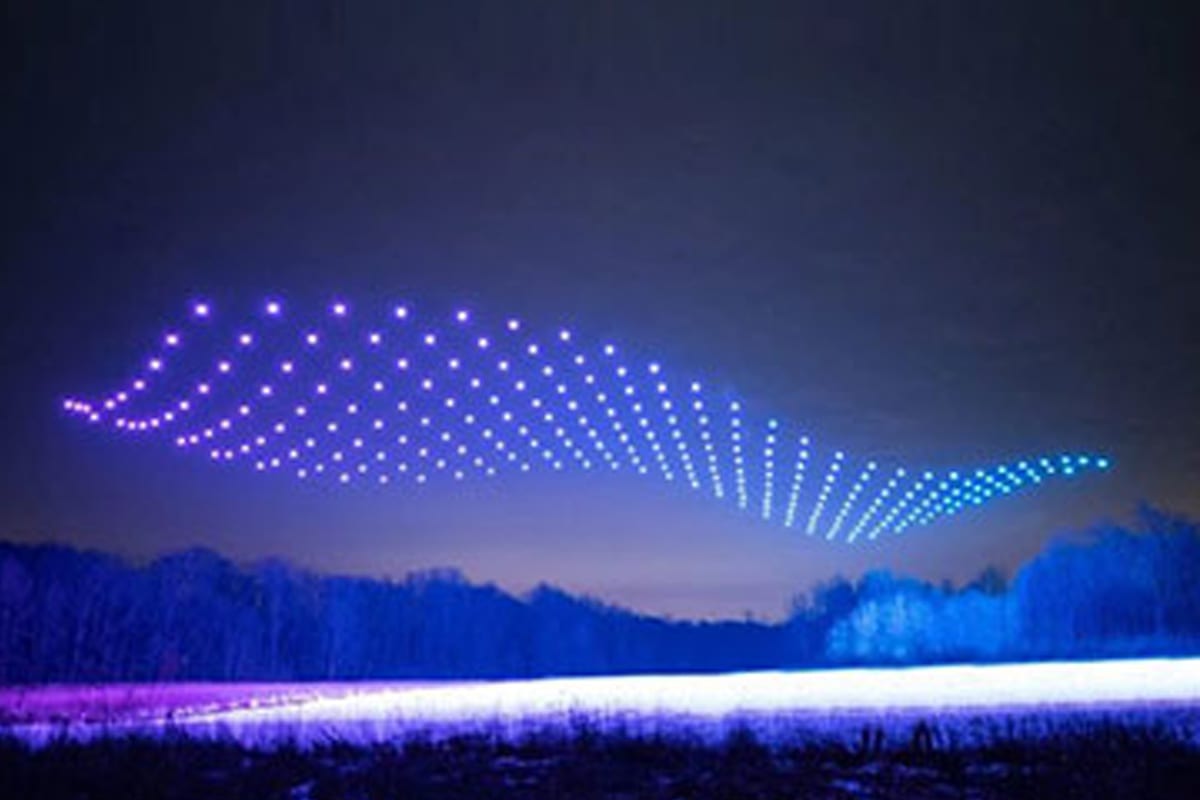
Precise and synchronized flight control is paramount. Sophisticated flight control systems use GPS, IMU (Inertial Measurement Unit) data, and advanced algorithms to maintain position, altitude, and orientation. These systems constantly adjust the drones’ motors to ensure smooth, coordinated movements, even in challenging wind conditions. The importance of synchronization lies in creating seamless visual effects and preventing collisions.
Drone Show Control Methods: A Comparison
Various methods exist for controlling drone swarms. These range from centralized systems, where a single GCS controls all drones, to decentralized systems, where drones communicate with each other and make independent decisions based on pre-programmed algorithms. Centralized systems offer tighter control but are vulnerable to single points of failure. Decentralized systems offer greater resilience but require more complex algorithms and communication protocols.
Basic System Architecture for a Small-Scale Drone Show
A basic system for a small-scale drone show might consist of 10-20 quadcopter drones, a powerful laptop acting as the GCS running show control software, a high-bandwidth wireless network for communication, and a dedicated operator to manage the show. This system would utilize a centralized control method for simplicity and ease of operation.
Drone shows are becoming increasingly popular for big celebrations, offering spectacular visuals. Imagine the breathtaking display you could create for the china new year 2025 festivities! Think vibrant dragons and blossoming cherry trees, all choreographed in the night sky. The possibilities for a truly unforgettable drone show are endless.
Planning and Design of Drone Shows
Transforming a concept into a breathtaking drone show requires meticulous planning and design. From securing permits to crafting compelling narratives, every detail contributes to the overall success.
Step-by-Step Guide for Planning a Drone Show
- Concept Development: Define the show’s theme, duration, and target audience.
- Choreography and Design: Create the flight paths and formations using specialized software.
- Location Scouting and Permits: Secure necessary permits and assess the suitability of the location.
- Safety Protocols: Develop and implement comprehensive safety protocols for drone operation.
- Rehearsals and Testing: Conduct thorough rehearsals and test flights to ensure synchronization and safety.
- Show Execution: Execute the show according to the planned schedule and safety protocols.
Drone Show Formations and Choreography Techniques
Drone shows utilize a wide range of formations, from simple geometric shapes to complex, dynamic patterns. Choreography involves precisely timing the drones’ movements to create flowing transitions and visually stunning effects. Common techniques include wave patterns, cascading effects, and the creation of 3D shapes and logos.
Creating a Compelling Visual Narrative
A compelling visual narrative is essential. The show should tell a story or convey a message through the drones’ movements and formations. This narrative can be abstract or representational, depending on the show’s theme. Effective storytelling involves carefully sequencing the formations and using lighting and music to enhance the emotional impact.
Selecting the Ideal Location and Time
Location selection considers factors such as airspace regulations, visibility, background scenery, and audience capacity. The time of day impacts lighting conditions and audience viewing. Shows are often scheduled during twilight or early evening to maximize visibility and minimize the impact of sunlight.
Sample Timeline for Drone Show Production
A typical timeline might span several months, including concept development (2 months), design and choreography (1 month), rehearsals and testing (1 month), and final show execution (1 day).
Safety and Regulations in Drone Shows
Safety and regulatory compliance are paramount for responsible drone show operation. This section Artikels essential safety measures and legal requirements.
Potential Risks and Mitigation Strategies
Potential risks include drone malfunctions, collisions, and uncontrolled landings. Mitigation strategies involve using redundant systems, conducting thorough pre-flight checks, implementing emergency procedures, and adhering to strict safety protocols. Having trained pilots and a robust communication system are also crucial.
Relevant Regulations and Legal Requirements
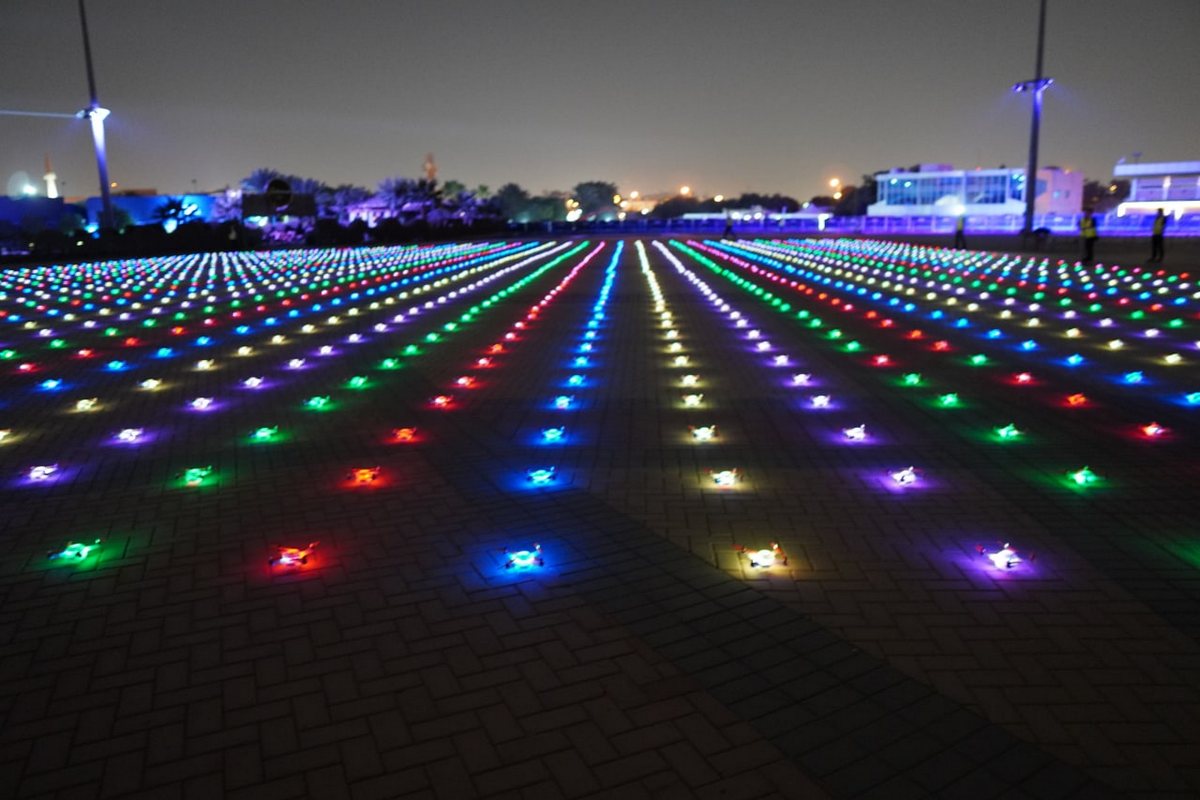
Regulations vary by location. Operators must obtain necessary permits and licenses, comply with airspace restrictions, and adhere to safety guidelines. These regulations often involve registration of drones, pilot certification, and operational limitations to protect public safety and prevent interference with other airspace users.
Emergency Procedures
Emergency procedures should be established and practiced. These include protocols for handling drone malfunctions, loss of communication, and unexpected events. Designated personnel should be responsible for responding to emergencies and ensuring the safety of the audience and personnel.
Drone shows are amazing, right? Think synchronized lights dancing across the night sky. But drone technology isn’t just for entertainment; it’s also used in serious applications like warfare. Check out this article on the ukrainian sea drone to see how drones are changing naval tactics. This shows how the same technology used for dazzling light shows can be adapted for critical missions, highlighting the versatile nature of drone technology in both entertainment and defense.
Comparison of Safety Regulations Across Regions
While many countries adopt similar principles, specific regulations may differ. For example, some countries may require more stringent pilot certifications or have stricter limits on the number of drones that can be operated simultaneously. It is crucial to research the specific regulations in the intended location for the drone show.
Checklist for Ensuring a Safe and Compliant Drone Show
- Obtain necessary permits and licenses.
- Conduct thorough pre-flight checks.
- Implement emergency procedures.
- Adhere to airspace restrictions.
- Maintain communication with air traffic control (if required).
- Ensure pilot proficiency.
- Have a contingency plan for unexpected events.
The Business of Drone Shows
Drone shows represent a burgeoning industry with diverse revenue streams and business models. Understanding the financial aspects is crucial for success.
Revenue Streams
Revenue streams include ticket sales (for public shows), sponsorships (from corporations or organizations), advertising revenue, and contracts for private events (weddings, corporate events, etc.).
Business Models
Business models vary from independent operators to large-scale companies. Some companies specialize in show production, while others focus on drone sales and maintenance. Some may operate as full-service providers, handling everything from concept development to show execution.
Typical Costs Involved
Costs include drone purchase and maintenance, software licenses, personnel salaries, insurance, permits, and marketing expenses. The scale of these costs directly correlates with the size and complexity of the show.
Marketing and Promotion Strategies
Effective marketing involves leveraging social media, online advertising, public relations, and partnerships with event organizers. High-quality videos and photos of previous shows are vital for showcasing the company’s capabilities.
Simple Financial Model for a Drone Show Event
| Revenue Item | Projected Revenue | Expense Item | Projected Expense |
|---|---|---|---|
| Ticket Sales | $10,000 | Drone Maintenance | $1,000 |
| Sponsorships | $5,000 | Personnel Costs | $3,000 |
| Other Revenue | $1,000 | Marketing | $1,500 |
| Total Revenue | $16,000 | Total Expenses | $5,500 |
| Net Profit | $10,500 | ||
Creative Aspects of Drone Shows
The creative potential of drone shows is vast, extending far beyond simple formations. This section explores the artistic elements that elevate these displays to a higher level.
Lighting and Music Enhancement
Lighting and music are integral to the visual impact. Synchronized lighting effects can dramatically enhance the formations, creating dynamic and emotionally resonant displays. Music sets the mood and complements the visual choreography, creating a holistic sensory experience.
Innovative and Creative Uses of Drones
Beyond simple formations, drones can create 3D sculptures in the air, project images onto surfaces, interact with other forms of entertainment (such as fireworks or laser shows), and even perform acrobatic maneuvers.
Storytelling and Narrative in Drone Shows
Effective storytelling uses the drones’ movements to convey a narrative. This narrative can be abstract or representational, evoking emotions and leaving a lasting impression on the audience. The sequence of formations, lighting, and music all contribute to the overall narrative arc.
Integrating Drone Shows with Other Entertainment
Drone shows can be integrated with other forms of entertainment to create a multifaceted spectacle. Examples include combining drone shows with fireworks displays, musical performances, theatrical productions, or sporting events.
Drone Show Concept: A Historical Event
- Theme: The American Revolution
- Narrative: Depict key battles and events through drone formations, culminating in the signing of the Declaration of Independence.
- Visuals: Use drones to form representations of ships, soldiers, and flags. Incorporate red, white, and blue lighting to represent the American flag.
- Music: Use patriotic music to enhance the emotional impact.
The Future of Drone Shows
The drone show industry is poised for significant growth and evolution, driven by technological advancements and expanding applications.
Emerging Technologies
Artificial intelligence (AI) will enable more complex and autonomous choreography, allowing for more intricate and dynamic displays. Improved battery technology will extend flight times, allowing for longer and more ambitious shows. Advancements in communication technologies will improve synchronization and reliability.
New Applications and Uses
Drone shows will find applications in advertising, entertainment, and even education. They could be used to create immersive experiences at theme parks or to project educational content in public spaces.
Predictions for Industry Growth, Drone show
The drone show industry is expected to experience significant growth in the coming years, driven by increasing demand and technological advancements. Larger, more complex shows with greater audience participation are likely to become more common.
Potential Societal Impact
Drone shows offer a unique form of public entertainment, fostering community engagement and creating memorable experiences. They can also be used to promote social causes or raise awareness about important issues.
Futuristic Drone Show Vision
Imagine a breathtaking nighttime spectacle: hundreds of autonomous drones, equipped with advanced LED lighting and holographic projection capabilities, weave intricate patterns across the night sky. These drones form complex 3D structures that shift and morph seamlessly, accompanied by a custom-composed orchestral score and synchronized laser displays. The drones interact dynamically with each other, creating a breathtaking ballet of light and sound, leaving audiences awestruck by the seamless blend of technology and artistry.
Closure
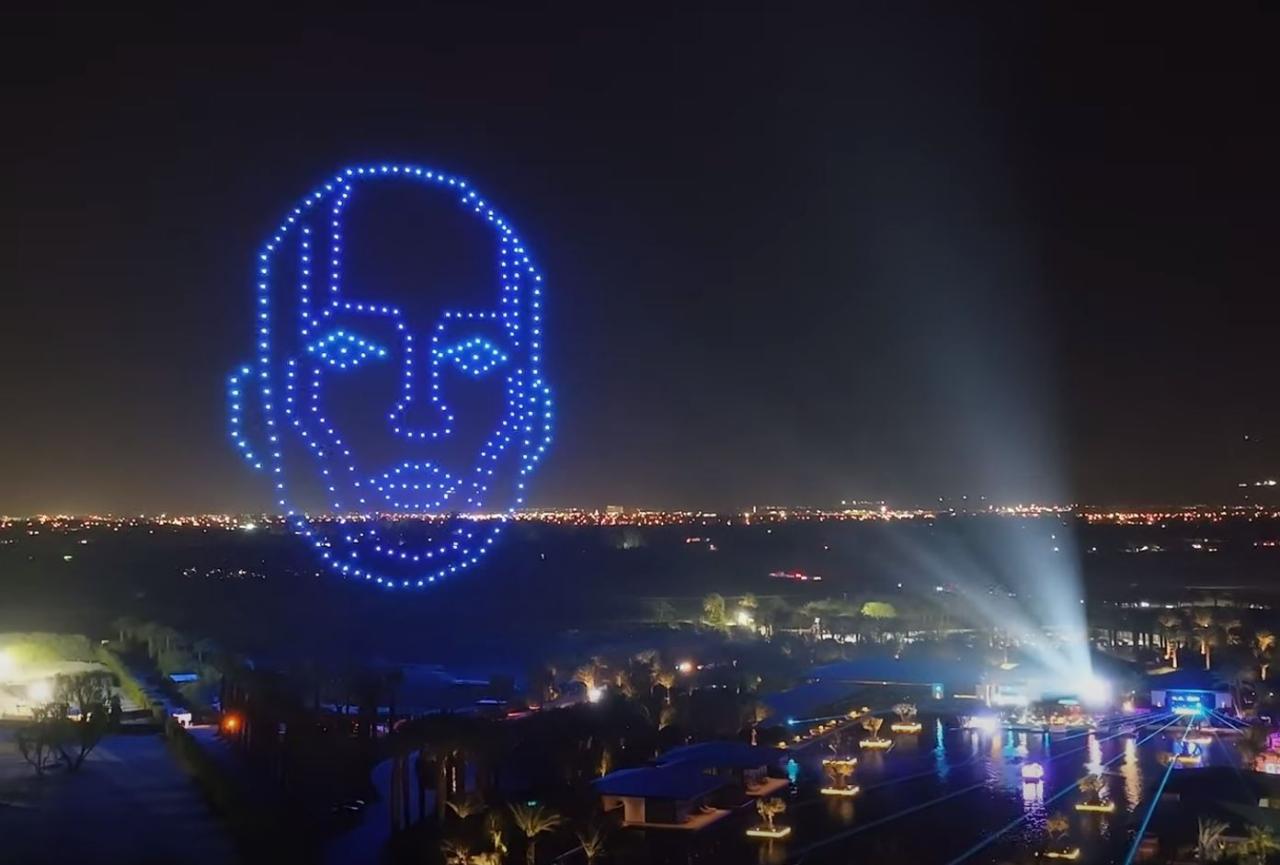
From the intricate technology and meticulous planning to the breathtaking visuals and the burgeoning business opportunities, drone shows represent a fascinating intersection of engineering, art, and entertainment. Whether you’re a budding entrepreneur, a curious spectator, or a seasoned professional in the industry, understanding the multifaceted aspects of drone shows offers a glimpse into a dynamic and rapidly evolving field.
The possibilities are limitless, and as technology continues to advance, we can only expect even more spectacular and innovative drone shows to light up our skies.
FAQ Summary
How much does a drone show cost to produce?
Costs vary drastically depending on the scale (number of drones, show length, complexity), location, and additional services needed (e.g., music licensing, special effects). Expect a wide range from a few thousand to hundreds of thousands of dollars.
What kind of permits are needed for a drone show?
Permits vary by location and country. You’ll generally need FAA (or equivalent) approval for airspace usage, permits from local authorities for the event location, and potentially insurance coverage. Check local regulations well in advance.
How long does it take to plan a drone show?
Drone shows are becoming increasingly popular, offering spectacular light displays choreographed in the night sky. For a truly unforgettable experience, check out the amazing visuals of the shanghai new year drone show , a prime example of this exciting technology. These shows showcase the artistry and precision possible with coordinated drone flights, proving that drone technology is much more than just aerial photography.
Planning time depends on the show’s size and complexity. Smaller shows might take a few weeks, while large-scale productions can require months or even a year of preparation.
What are the career opportunities in the drone show industry?
Opportunities exist in drone piloting, software development, show design, event management, marketing, and business administration. The industry is rapidly expanding, creating diverse roles for skilled individuals.
